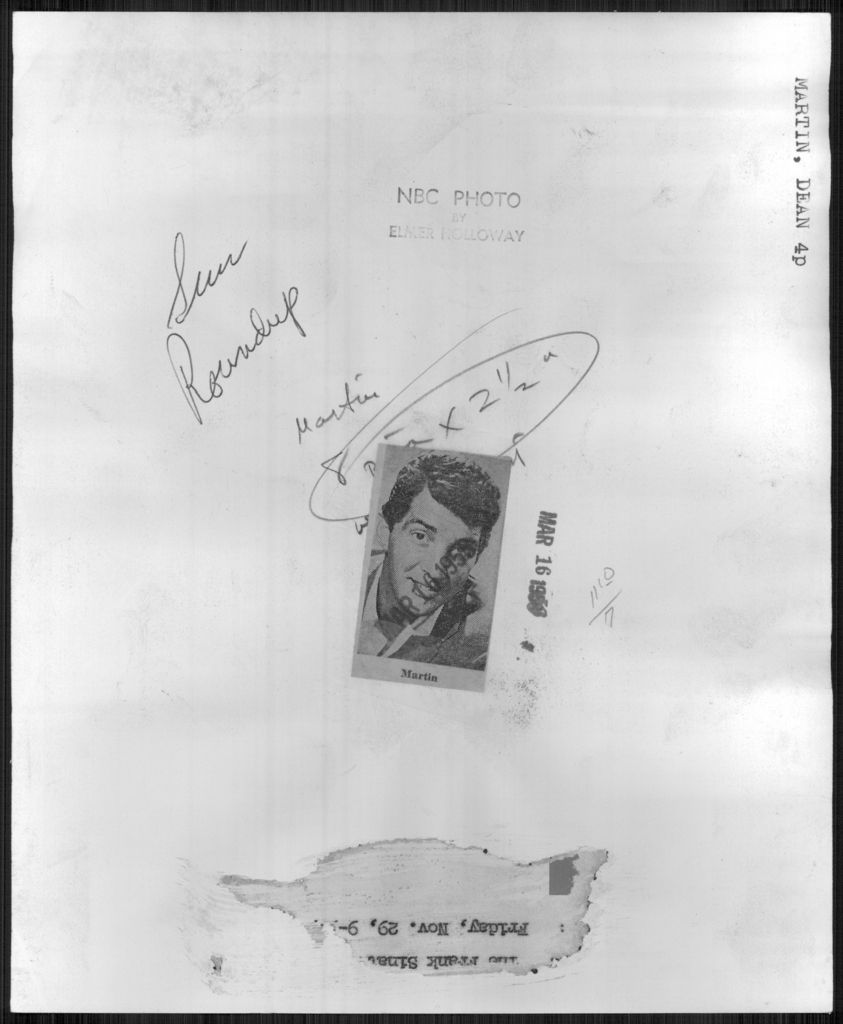Picture this: you’re driving along, minding your own business, when suddenly – a flat tire, an unexpected breakdown, or perhaps your battery decides to call it quits far from any service station. It’s a scenario that plays out millions of times a year. In 2024 alone, AAA responded to approximately 31 million roadside calls, with dead batteries, flat tires, and lockouts consistently topping the list. The reality is, roadside emergencies haven’t gone away; they’ve simply evolved with our vehicles, affecting electric cars, hybrids, and traditional vehicles alike.
A solid emergency kit tucked away in your trunk isn’t just a collection of gadgets; it’s the difference between a panic-inducing moment and a manageable pause until help arrives. It acts as your personal insurance policy on the road, empowering you to handle minor glitches yourself and potentially mitigate more serious situations. Knowing you’re prepared significantly reduces driving stress, giving you the confidence that you have the tools to tackle whatever unforeseen circumstances come your way.
Beyond personal peace of mind, being prepared extends to helping others. If you encounter another stranded motorist, your well-equipped car kit can make a profound difference. Whether it’s offering a jump start, providing crucial first aid, or sharing extra water, your readiness can be a lifeline for someone else. Addressing minor issues yourself, such as changing a tire or jumping a battery, also saves invaluable time and money that would otherwise be spent waiting for a tow truck or mechanic. So, let’s dive into the essential items every driver should have to stay safe and confident on any journey.
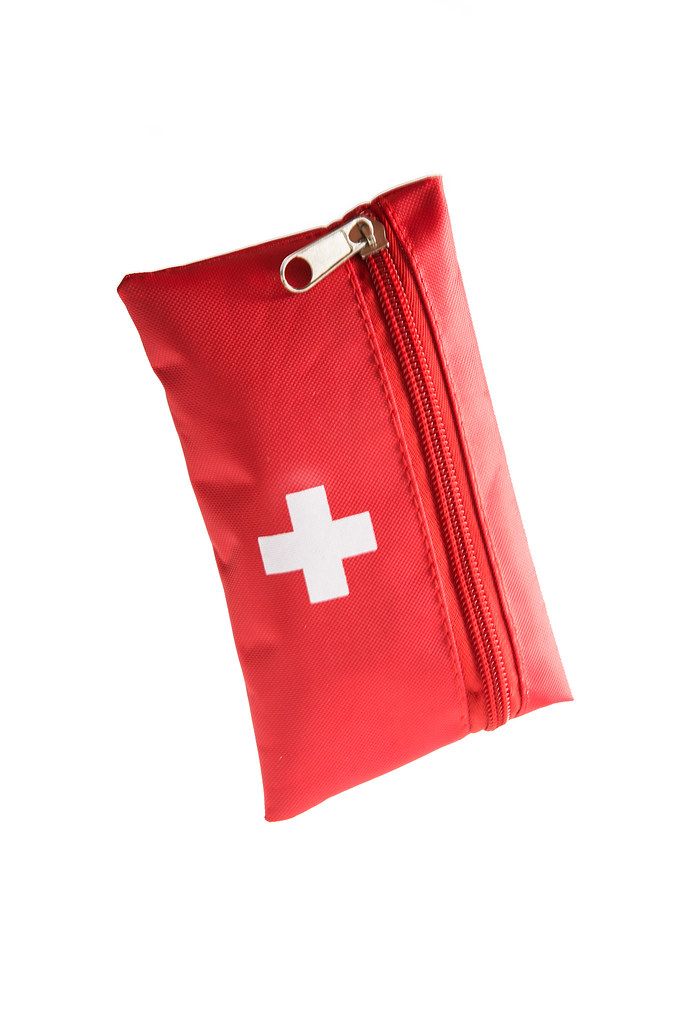
1. First Aid Kit
Without a doubt, a comprehensive first aid kit is one of the most critical components of any emergency preparedness strategy, and your vehicle is no exception. From a small cut sustained while checking under the hood to a more serious injury following an accident, having the necessary supplies to manage a medical emergency on the spot can genuinely be lifesaving. It allows for immediate intervention, which can be crucial in preventing minor issues from escalating.
When assembling your car’s first aid kit, think beyond just a handful of bandages. Essential items should include adhesive bandages of various sizes, elastic bandages for sprains, antibiotic ointment, and antiseptic wipes to prevent infection. Don’t forget cotton swabs, sterile gauze pads, hydrocortisone cream for skin irritations, and an instant cold pack to reduce swelling.
Further enhancing your kit, be sure to include latex or nitrile gloves for hygiene, pain relievers, scissors, and tweezers. The American Heart Association and American Red Cross 2024 First Aid Guidelines explicitly recommend a manufactured windlass tourniquet, additional gauze pads, triangular bandages, oral glucose, and aspirin. These additions reflect a modern, evidence-based approach to treating injuries and life-threatening bleeding effectively while you await professional medical services.
Ultimately, the primary goal of your first aid kit is to enable you to treat injuries and control life-threatening bleeding during those critical moments before emergency medical services can reach you. Beyond just having the supplies, programs like ‘Stop the Bleed’ emphasize that skills matter more than fancy packaging. Knowing how to use these tools effectively is just as important as having them readily available.
Read more about: Rediscovering the Essentials: 13 Indispensable Workshop Tools You Might Be Forgetting

2. Flashlight and Extra Batteries
Finding yourself stranded on the side of the road at night or in low-light conditions can be incredibly disorienting and dangerous. This is where a reliable flashlight becomes absolutely indispensable. It significantly increases your visibility to other drivers, helping to signal your presence and prevent further collisions. Beyond just being seen, it empowers you to inspect your vehicle, read maps, or locate other items in your kit without draining your car’s battery.
When selecting a flashlight for your car emergency kit, it’s wise to choose one known for its durability and long battery life. More importantly, always remember to keep a fresh set of spare batteries stored with it. This foresight ensures that your light source will be ready when you need it most. Some excellent options highlighted in emergency preparedness guides include rechargeable emergency LED blackout flashlights with nightlights, or even hand-cranked flashlights that eliminate the need for batteries entirely.
Multi-purpose tools can also serve this need effectively. For instance, an emergency hand-crank weather alert radio often comes with a built-in LED flashlight. The Red Cross specifically highlights such radios as emergency essentials, recognizing their dual functionality in providing light and crucial information. A robust flashlight is not just for illuminating your surroundings; it’s a vital tool for signaling for help and safely performing necessary tasks like changing a tire in the dark.
Read more about: Unlock Winter Driving Ease: 14 Essential Car Hacks Every Driver Needs for a Stress-Free Cold Season
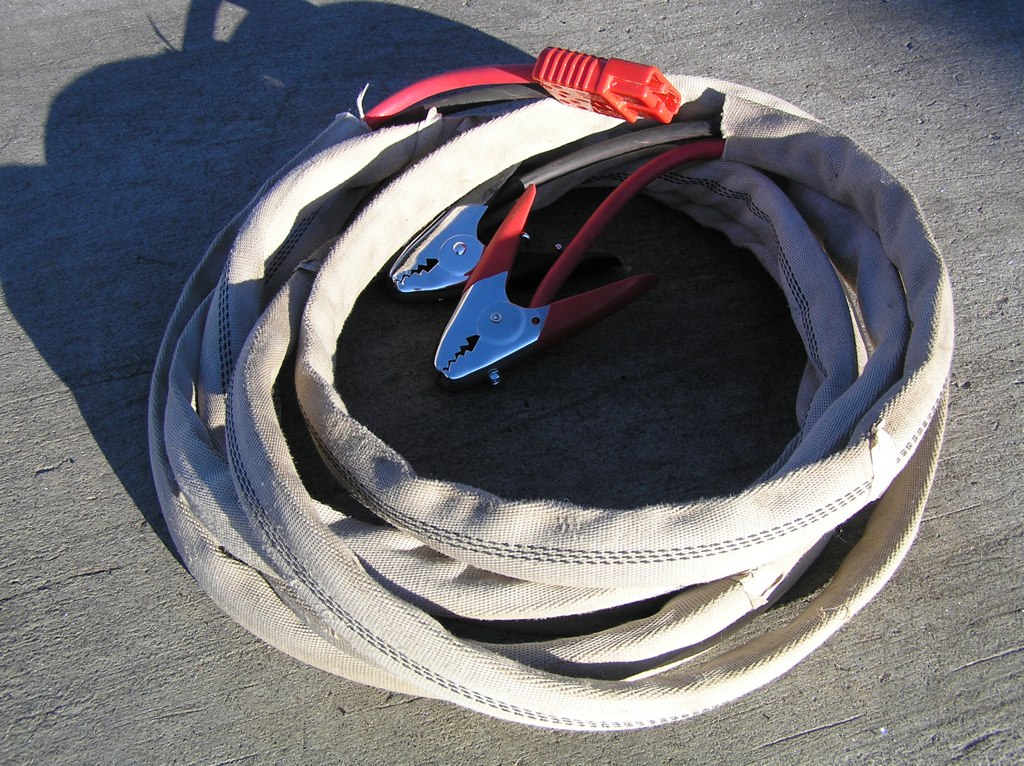
3. Jumper Cables or Portable Jump Starter
A dead car battery is, without question, one of the most common and frustrating vehicle-related emergencies drivers face. It can leave you completely immobile, turning a simple errand into a major ordeal. Having a reliable set of jumper cables in your trunk is a classic solution, allowing you to get back on the road quickly, especially if you can flag down a passing motorist or arrange for assistance from a tow service.
However, relying on the kindness of strangers or the availability of another vehicle isn’t always practical or possible. This is where a portable jump starter becomes an absolute game-changer. These compact devices are designed to restart your car’s battery without the need for another vehicle, offering an incredible level of self-sufficiency in an emergency. They are increasingly popular for their convenience and effectiveness, giving you direct control over getting your car operational again.
AAA notes that jump equipment, whether cables or a portable pack, is essential for any car emergency kit. If you opt for a compact jump pack, remember to test it twice a year and ensure it remains fully charged. This proactive maintenance prevents the scenario where your jump pack is also dead when you need it most. It’s also worth remembering that most 12-volt car batteries typically last between three to five years, often shorter in hot climates, so it’s a good practice to test yours before embarking on any long trips.
By having these tools, you’re not just preparing for a breakdown; you’re empowering yourself to address minor issues on your own. This proactive approach saves you significant time and money that might otherwise be spent on costly tow truck services or mechanic visits for something as simple as a dead battery. It’s a smart investment in your autonomy and efficiency on the road.
Read more about: Unlock Your Car’s Full Potential: 14 Simple DIY Maintenance Tasks Every Driver Must Master for a Longer, Safer Ride
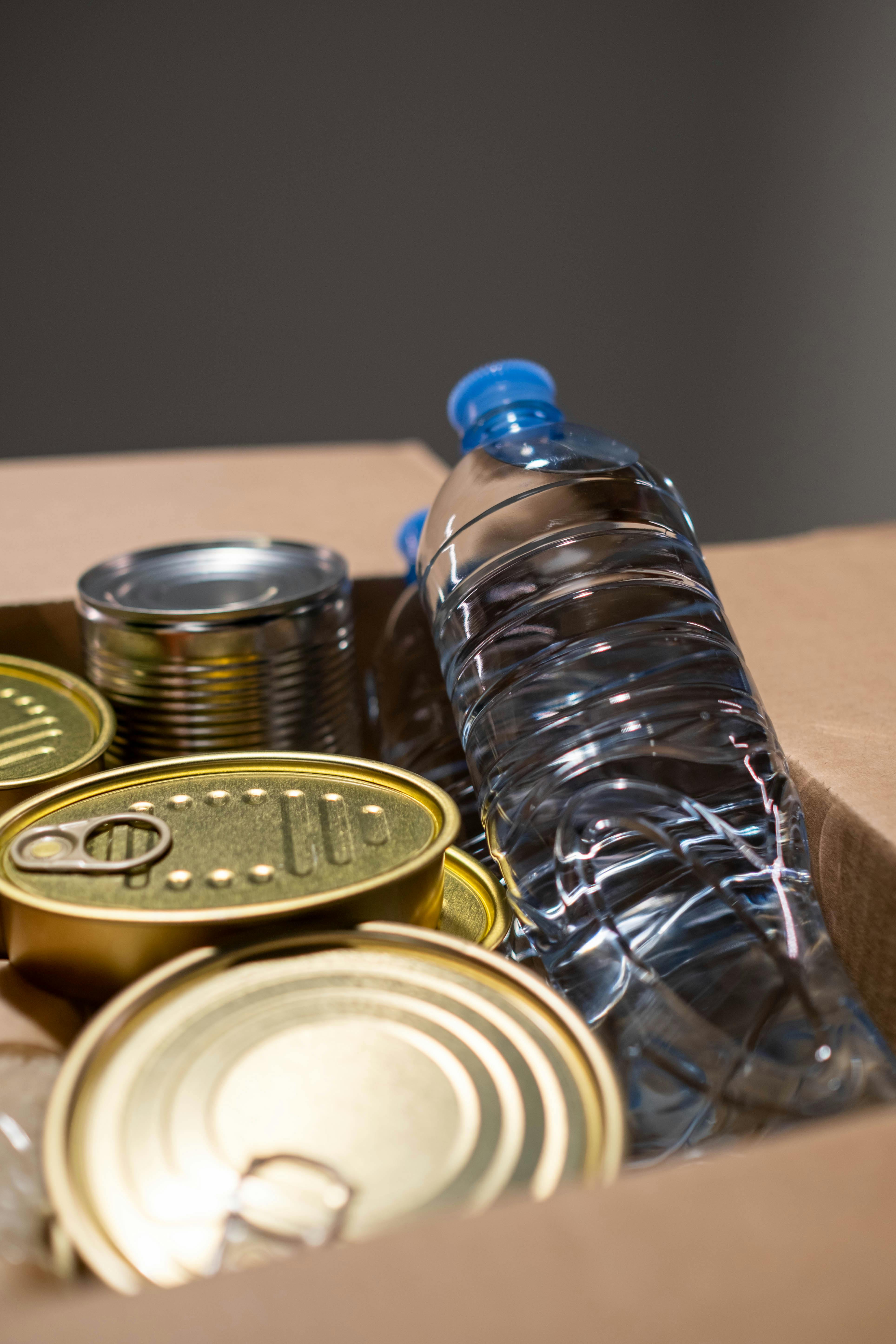
4. Water and Non-Perishable Food
Being stranded in your vehicle for an extended period, whether due to severe weather, a major accident, or an unexpected breakdown in a remote area, necessitates access to basic sustenance. Having a supply of clean drinking water and non-perishable food is absolutely critical for maintaining your physical well-being and keeping your spirits up during such a stressful time. Hydration, in particular, is paramount, especially in warmer climates or during any physical exertion.
The general guideline for water storage is to keep at least one gallon of water per person for every 24 hours you might be stranded. While this might seem like a lot, it accounts for drinking, basic hygiene, and potential minor cooling needs. Store your water in sealed bottles, preferably plastic, as they are less prone to breaking if temperatures drop. Regularly replacing your water supply, ideally twice a year, ensures it remains fresh and safe for consumption.
Alongside water, a selection of non-perishable, high-energy snacks is essential. Items like granola bars, trail mix, nuts, dried fruit, or even canned goods (with a can opener, of course) can provide the necessary nourishment without worrying about spoilage. These types of foods are designed to tolerate varying temperatures, making them ideal for trunk storage. They offer sustained energy and can significantly boost morale when faced with unexpected delays.
Ultimately, keeping these provisions ensures hydration, warmth or cooling, and basic hygiene during potentially long waits for assistance. It’s a fundamental layer of your emergency kit, offering a sense of security that you won’t be left hungry or thirsty, allowing you to focus on the situation at hand rather than basic survival needs. For hot climates, consider adding electrolyte packets to your water supply to help prevent dehydration.
Read more about: The 14 Sneaky Storage Slip-Ups Costing You Big: Your Essential Guide to Smarter Food Preservation and Less Waste

5. Blankets and Warm Clothing
If you find yourself stuck in your car for an extended period, particularly during cold or winter conditions, maintaining your body heat is absolutely critical for your safety and well-being. Vehicle heating systems rely on a running engine, and running your engine continuously can deplete your fuel supply, especially during a prolonged wait. This is why having independent sources of warmth in your emergency kit is not just a comfort, but a vital survival strategy.
Pack at least one warm blanket, and ideally extra clothing items such as hats, gloves, scarves, and mittens. These layers can make a huge difference in insulating your body and preventing hypothermia. If you live in an area prone to harsh winter storms, you might want to consider including supplies explicitly tailored to cold-weather survival, such as a wool blanket or a winter-rated sleeping bag, along with chemical hand warmers for immediate relief.
In a winter roadside emergency, the context emphasizes a crucial protocol: stay inside the vehicle for shelter. If you need to run the engine for warmth, do so for about ten minutes each hour, ensuring you crack a window slightly to prevent carbon monoxide buildup and that your tailpipe is completely clear of snow or debris. Additionally, keep your arms and legs moving regularly to maintain circulation and generate some body heat.
These items fall under the ‘shelter and comfort’ layer of your emergency kit, designed to provide hydration, warmth or cooling, and basic hygiene during long waits. They ensure that even if your vehicle’s systems fail or you need to conserve fuel, you have the means to stay safe and relatively comfortable, mitigating the risks associated with exposure to the elements. Packing multiple quilts and blankets is a wise choice if you reside in an especially cold region.
Read more about: Navigating the High Stakes: An In-Depth Preview of the Detroit Lions and Kansas City Chiefs Week 6 Showdown
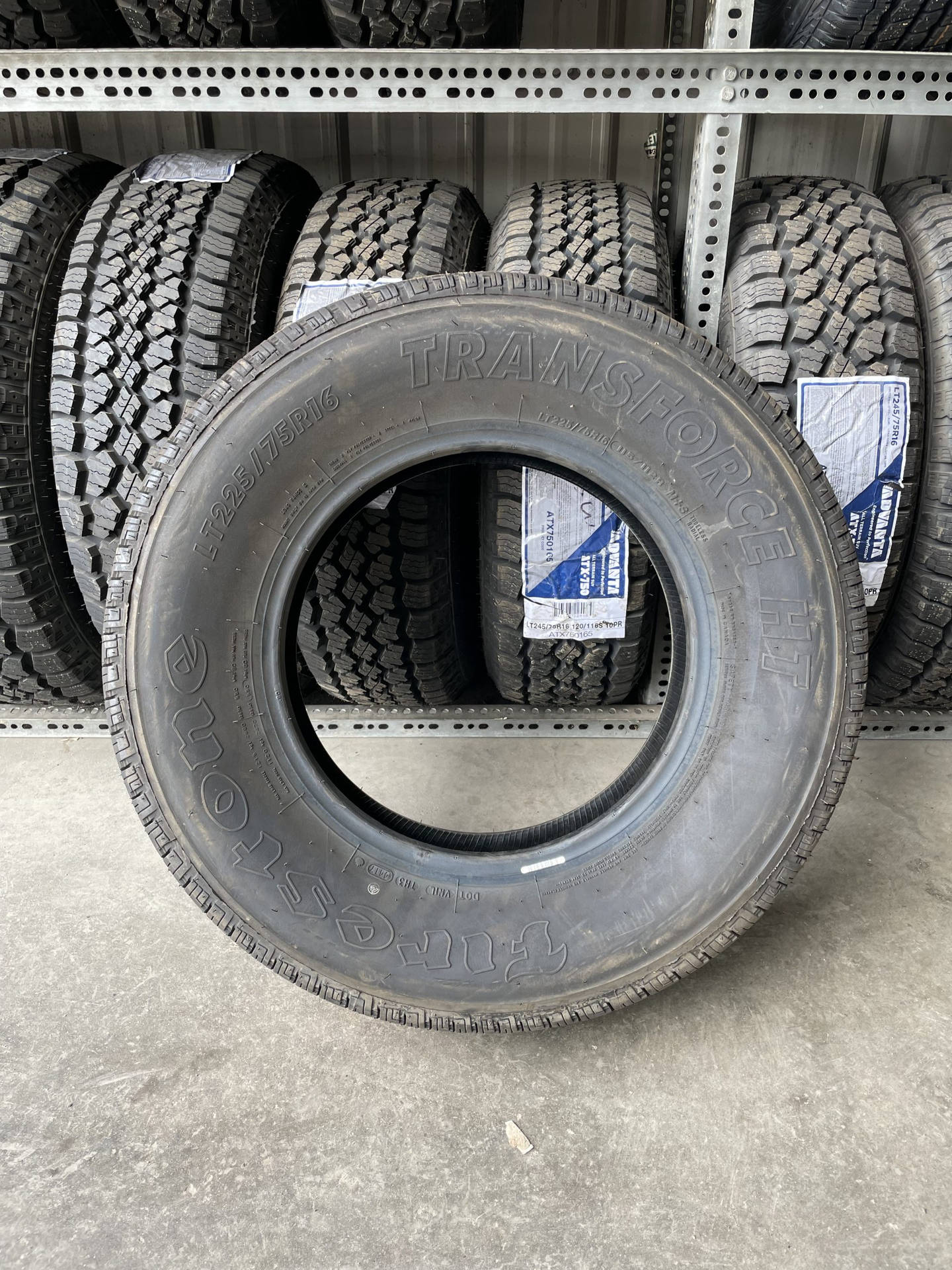
6. Tire Repair Kit and Inflator / Spare Tire Equipment
Flat tires consistently rank among the top reasons for roadside assistance calls, making tire-related solutions an absolute must-have in your emergency kit. It’s a surprising reality that, as Consumer Reports noted in 2024, about 40 percent of new cars now ship without a full-size spare tire. Instead, many manufacturers provide only a compressor and a sealant kit. This makes it more important than ever for drivers to be aware of their specific ‘spare situation’ and prepare accordingly.
If you’re faced with a flat tire and don’t have a traditional spare, a tire repair kit or a portable tire inflator can be a temporary lifeline. These kits typically include a patching tool and a sealant, which can help you temporarily fix a small puncture and get your vehicle to the nearest repair shop. A 12-volt inflator paired with a quality plug kit can effectively handle many common nail punctures, while sealant kits are generally suitable only for small tread punctures and won’t work for sidewall damage. Always consult your owner’s manual for guidance on tire sealant and sensor compatibility.
For those with a traditional spare tire, ensuring it’s in good condition is vital. Make it a habit to check your spare tire’s pressure every month, just as you would your regular tires, and inspect its overall condition. Alongside the spare, ensure you have a functional jack, a lug wrench that fits your wheel nuts, and a tire iron, all stored conveniently nearby. A tire pressure gauge is also a handy tool to keep on hand for regular checks.
Furthermore, when you’re performing roadside tire work, having a ground mat and wheel chocks can make the job safer and more manageable. These items help keep your hands and knees clean while providing stability for your vehicle during the tire change. Understanding your vehicle’s specific tire setup and having the right tools for it can save you significant frustration and potential danger on the side of the road.
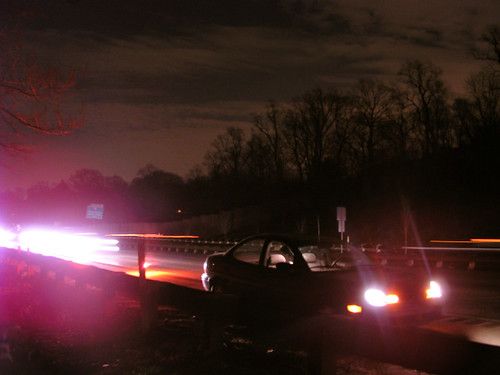
7. Road Flares or Reflective Triangles
When your car becomes disabled on the side of the road, particularly at night or in conditions of low visibility such as fog or heavy rain, your immediate priority shifts to ensuring your safety and making your vehicle visible to other drivers. This is where road flares or reflective triangles become absolutely essential. These signaling devices play a critical role in alerting oncoming motorists to your presence, significantly reducing the risk of an additional accident.
The National Highway Traffic Safety Administration (NHTSA) explicitly lists flares as a recommended item in emergency kits, and AAA training materials offer precise guidance on their deployment. The recommended strategy involves placing one flare or reflective triangle approximately 10 feet behind your vehicle, another farther back for faster-moving traffic, and a third even farther away if available. This creates a graduated warning zone, giving approaching drivers ample time to react and adjust their speed or lane position.
While traditional road flares are highly effective, it’s worth noting that LED beacons offer an excellent modern alternative, especially in situations where conventional flares might pose a fire risk, such as in dry grassy areas. Regardless of the type you choose, the principle remains the same: create a clear, unmistakable visual warning. For reflective triangles, setting them about 10 to 20 yards behind the car helps them effectively catch headlights and make your vehicle stand out to passing drivers.
Ultimately, these visibility and signaling tools are a core component of your emergency preparedness, providing an authoritative basis for safety endorsed by organizations like NHTSA and AAA. They ensure you stay seen and effectively warn oncoming traffic, giving you peace of mind that you’ve taken crucial steps to protect yourself and others on the roadway during an unforeseen stop.
Continuing our exploration into the indispensable tools for roadside emergencies, we now turn our attention to the remaining seven items that will further empower you to handle unexpected situations with confidence. These additions round out a truly comprehensive kit, ensuring you’re prepared for a wider array of challenges, from communication failures to severe weather and accident scenarios. With these tools at hand, you’ll enhance your ability to problem-solve, stay safe, and provide assistance, cementing your status as a prepared and responsible driver.
Read more about: The Ultimate Road Trip Safety Playbook: 12 Non-Negotiable Rules to Keep Your Journey Smooth and Secure for Every Driver
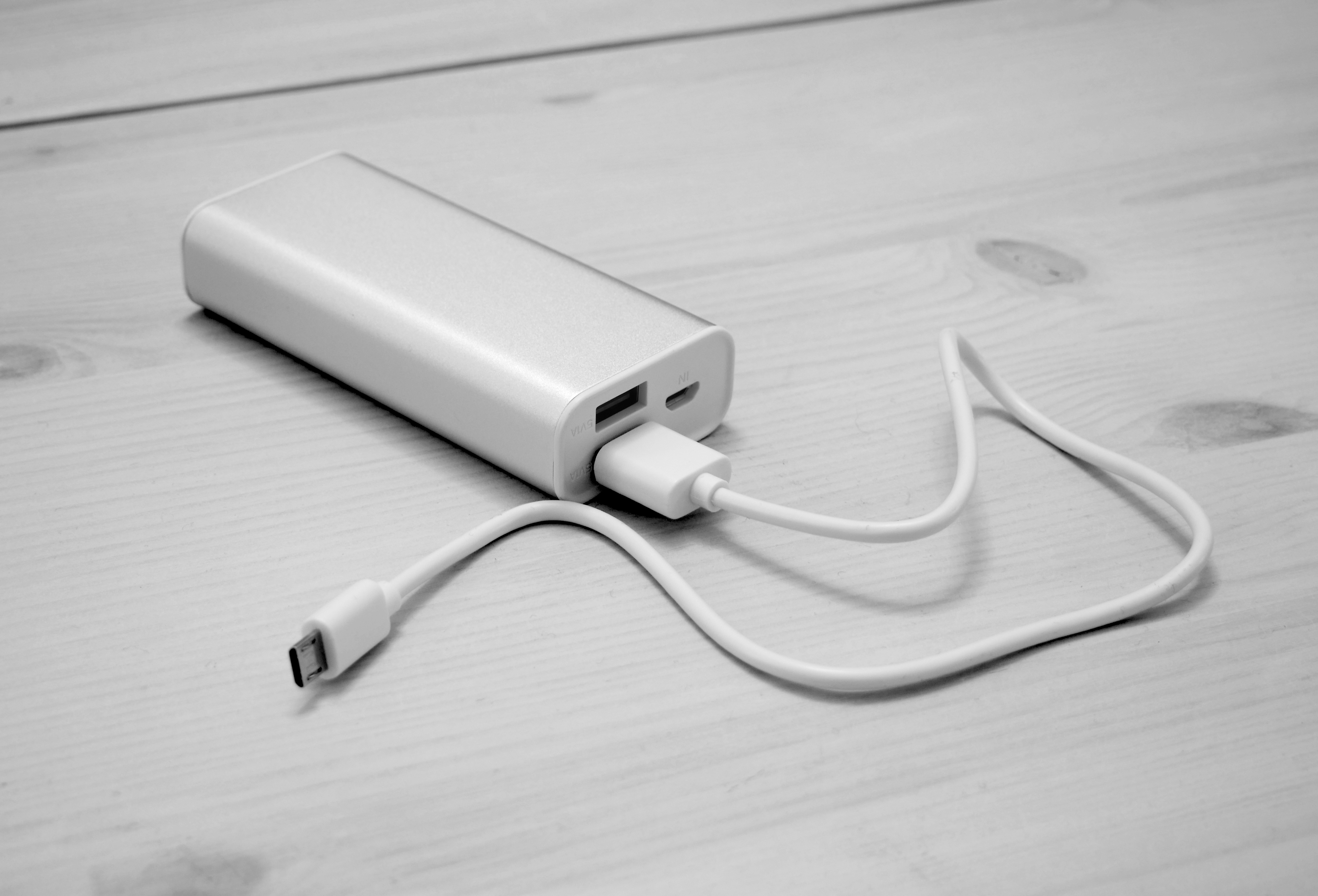
8. Portable Power Bank
In today’s interconnected world, your smartphone isn’t just a convenience; it’s a critical lifeline in an emergency. It allows you to call for help, access digital maps, and stay updated on important information. However, if your car’s battery dies or you’re stranded for an extended period, your phone’s charge can quickly dwindle, cutting off your primary means of communication and information.
A high-capacity portable power bank is the ultimate solution to this modern dilemma. It ensures your phone remains fully charged, providing multiple recharges without relying on your vehicle’s power. This compact device offers an incredible sense of security, knowing you can always reach out for assistance or stay connected with loved ones, even when your car’s electrical system is out of commission.
When choosing a power bank, opt for one known for its reliability and ability to hold a charge over time. Regular maintenance is key; make it a habit to test your power bank twice a year and ensure it remains fully charged. This simple step prevents the frustrating scenario where your backup power source is also dead when you need it most, truly empowering you in any roadside situation.
Read more about: You Won’t Believe How Much These 11 Celebrities Paid for Driving Under the Influence (and More!)

9. High-Visibility Safety Vest
Stepping out of your vehicle on the side of a busy road, especially at night or in adverse weather, is inherently dangerous. Other drivers, often distracted or facing limited visibility themselves, might not see you until it’s too late. A high-visibility safety vest transforms you into a beacon, drastically increasing your personal safety by making your presence unmistakable to oncoming traffic.
When selecting a vest for your emergency kit, aim for one that meets the ANSI/ISEA 107-2020 performance requirements. This standard ensures the fluorescent material is vibrant and the retroreflective elements are highly visible in headlights, offering maximum protection. While you might not be a road worker, adopting this level of safety gear is a smart, proactive choice for any driver.
Wearing a fluorescent vest is a crucial layer of self-protection. Research, even from 2025 IIHS studies, shows that while reflective clothing can occasionally confuse some automated pedestrian detection systems, it undeniably improves human visibility. Never assume a driver-assist system will notice you; prioritize your own visible safety in every roadside scenario.
Read more about: 14 Wild Ways Cycling Is More Than Just a Ride (Plus, How You Can Join the Fun!)
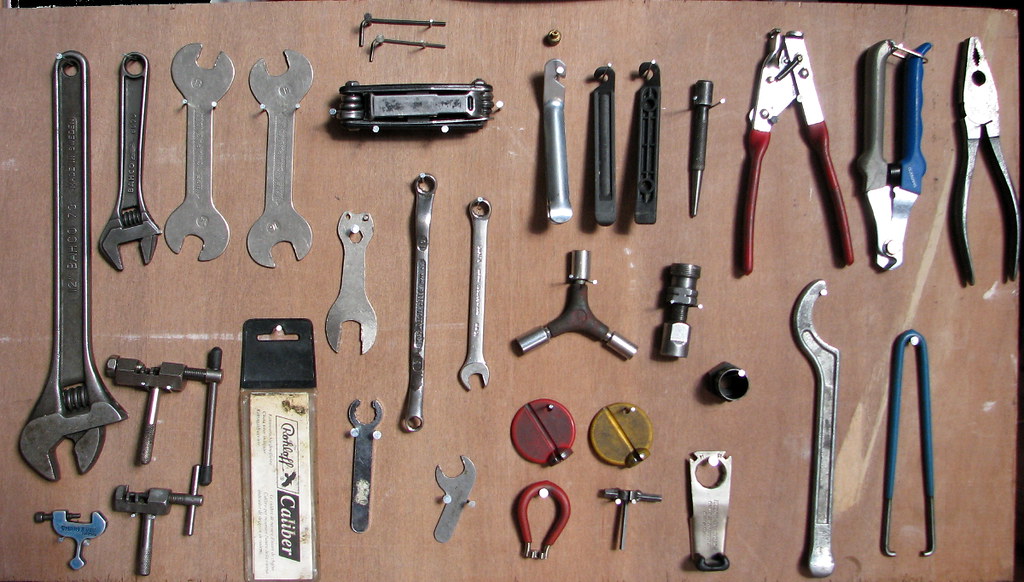
10. Versatile Basic Tool Kit
Many common roadside issues, from a loose battery terminal to a rattling heat shield, can be quickly addressed with a few basic tools. A small, versatile tool kit in your trunk isn’t about performing major engine repairs; it’s about empowering you to handle minor mechanical glitches yourself, potentially saving you a costly tow or a lengthy wait for roadside assistance.
Your basic tool kit should include essentials like a multi-tip screwdriver set, a pair of pliers, and an adjustable wrench. Adding a few common sockets, a sharp knife, and a wire cutter can further expand your capabilities for small fixes. These tools are often compact and can be neatly organized, making them easy to access when you need them most for unexpected repairs.
Duct tape and zip ties, though seemingly simple, are the unsung heroes of temporary repairs and quick fixes. NHTSA explicitly lists duct tape and basic tools in its recommendations for emergency kits, underscoring their immense utility. From temporarily patching a leaky hose to securing a loose bumper or bundling items, their versatility knows few bounds, making them invaluable additions to any roadside repair scenario.
For a more compact solution, a high-quality multi-tool can provide a surprising array of functions in a single device. Look for one with features like scissors, pliers, various screwdrivers, and a sturdy knife. This single item can serve multiple purposes, helping you with everything from cutting a seatbelt in an emergency to opening a can of food if you’re stranded for an extended period.
Read more about: Rediscovering the Essentials: 13 Indispensable Workshop Tools You Might Be Forgetting

11. Emergency Radio
In a widespread emergency, natural disaster, or severe weather event, traditional communication channels like cell service and internet can become unreliable or entirely non-functional. An emergency radio becomes an essential tool for staying informed, allowing you to tune into crucial emergency alerts, weather warnings, and vital instructions from authorities when all other lines of communication are down.
Many modern emergency radios offer more than just a listening function. The Red Cross highlights hand-crank or solar-charging radios as emergency essentials, recognizing their ability to operate without external power sources. These models often receive AM/FM and weather bands, ensuring you have access to a broad range of information regardless of the situation.
Furthermore, many of these multi-purpose devices come with a built-in LED flashlight, providing a reliable light source in dark conditions. Some even include a USB port that allows you to charge your smartphone, making them incredibly versatile tools for both communication and power, extending the utility of your emergency kit significantly.
Read more about: Anne Heche: Tragic Passing of a Versatile Actress at 53 — A Detailed Account of Her Final Days, Investigation, and Lasting Impact
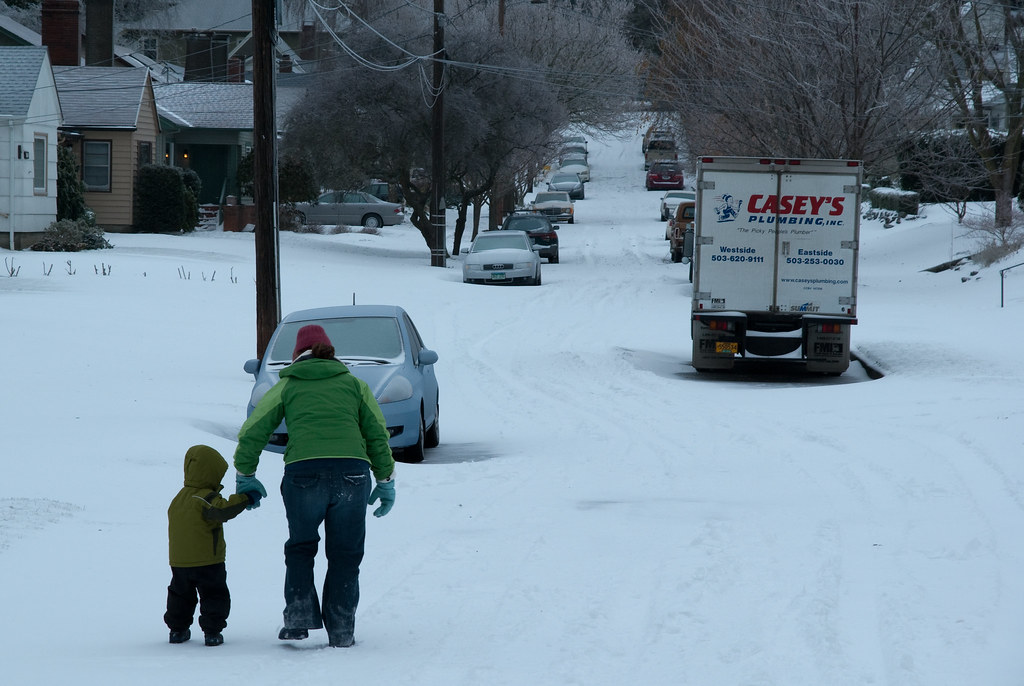
12. Shovel with Traction Aids
Getting stuck in snow, mud, or sand is a common scenario that can quickly turn a routine drive into a frustrating ordeal, particularly if you venture off-pavement or live in a region prone to challenging weather. A small, robust shovel and some traction aids can be your best friends in such situations, providing the means to free your vehicle without waiting for help.
For practical trunk storage, opt for a compact or foldable metal shovel. These are designed to take up minimal space but are sturdy enough to dig out tires or clear paths when your vehicle gets bogged down. Knowing you have the power to literally dig yourself out of a tricky spot adds a significant layer of confidence to your driving preparedness.
To complement your shovel, traction aids like sand or non-clumping cat litter can provide that crucial grip your tires need on slippery surfaces. Scatter a handful in front of your drive wheels, and the gritty texture will create the necessary friction, often allowing your vehicle to get unstuck. It’s an old trick that remains incredibly effective for regaining mobility.
If you live in a winter region, consider adding an ice scraper and brush, along with extra washer fluid and windshield de-icer. These items are vital for maintaining clear visibility and dealing with the inevitable ice and snow buildup. Some places even have laws requiring you to clear snow from your car, making an ice scraper an essential, legally compliant tool.
Read more about: The Electric Pickup Truck Showdown: A Comprehensive Review of Ford F-150 Lightning and Tesla Cybertruck
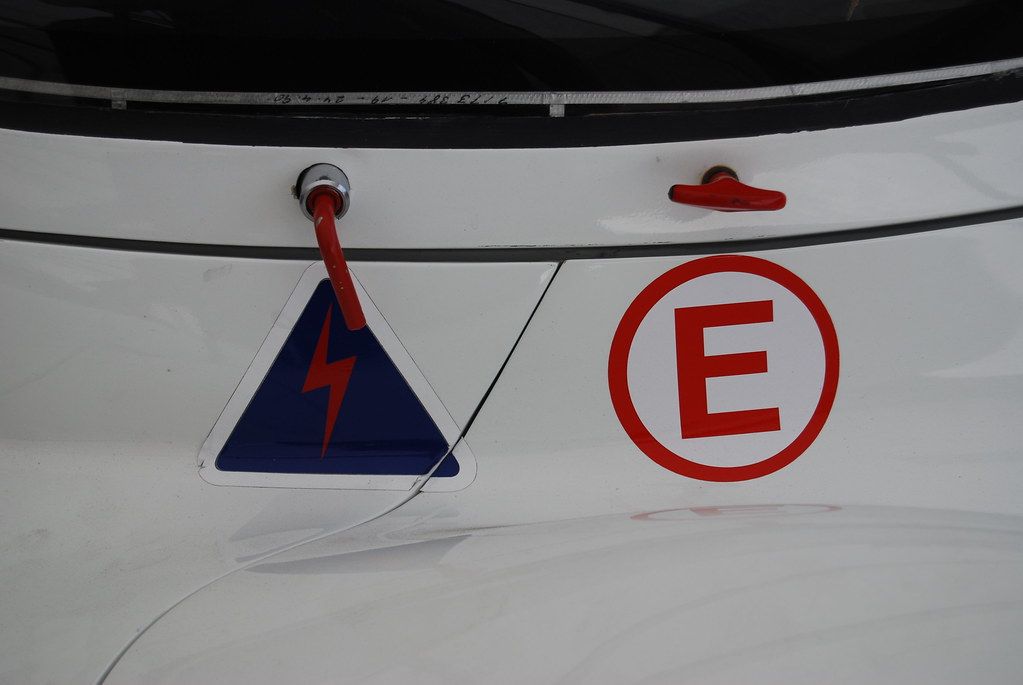
13. Car-Safe Fire Extinguisher
While hopefully never needed, a vehicle fire is a serious and potentially life-threatening event that can escalate rapidly. Having a small, car-safe fire extinguisher accessible in your trunk can be a lifesaver, allowing you to tackle small engine fires or other electrical issues before they become catastrophic.
The U.S. Fire Administration emphasizes getting everyone out and calling 911 in a vehicle fire, making evacuation your top priority. However, they also state that an extinguisher should only be used if the fire is very small, you have a clear escape path, and you can maintain a safe distance. This highlights the importance of having the tool, but also knowing its limitations.
If you choose to carry a fire extinguisher, it’s crucial to secure it properly with reliable mounts. This ensures it’s easy to reach in an emergency, rather than rattling around your trunk or becoming a projectile in a collision. Remember, the primary goal is always safety: get yourself and any passengers to a safe distance, then assess if the fire is small enough and safe to attempt to extinguish.
Read more about: Equipping Your Vehicle: The Essential Guide to Surviving Roadside Breakdowns and Unexpected Hazards

14. Essential Safety Escape Tools
In the aftermath of a severe crash, being trapped inside your vehicle can be a terrifying prospect, with every second counting towards your safe extrication. Dedicated safety escape tools are designed to facilitate rapid egress from a damaged vehicle, addressing two common entrapment scenarios: a jammed seatbelt and an inability to open windows or doors.
These compact devices typically incorporate a seat-belt cutter and a window breaker. The window breaker component usually features a spring-loaded punch, which is highly effective at shattering tempered side windows. However, it’s critical to note that these tools typically fail on laminated side windows, so it’s wise to check your vehicle’s window corners for etched markings indicating the glass type.
For the seat-belt cutter, choose a dedicated design with a guarded blade. This ensures it’s safe to handle yet quickly and efficiently slices through a jammed seatbelt. AAA recommends simple, tested designs that are mounted where you can easily reach them while still buckled, ensuring precious seconds aren’t lost fumbling for the tool.
Where you store these tools is just as important as having them. Mount your escape tool in the cabin, within arm’s reach while you’re buckled into your seat, rather than in the trunk. This ensures immediate access when seconds truly count. Equipping yourself with these tools is a proactive step towards mitigating the most severe consequences of an unforeseen collision.
Read more about: From Street Takeovers to Uninsured Nightmares: The Wildest Automotive Hits You Won’t Believe
Ultimately, a car emergency kit is far more than just a collection of items; it’s a tangible investment in your safety, autonomy, and peace of mind on the road. By building and maintaining this essential preparedness strategy, you transform potential panic into manageable pauses, empowering you to navigate life’s unexpected detours with confidence. So, take these simple steps today, and drive forward knowing you’re ready for whatever the road ahead may bring.



